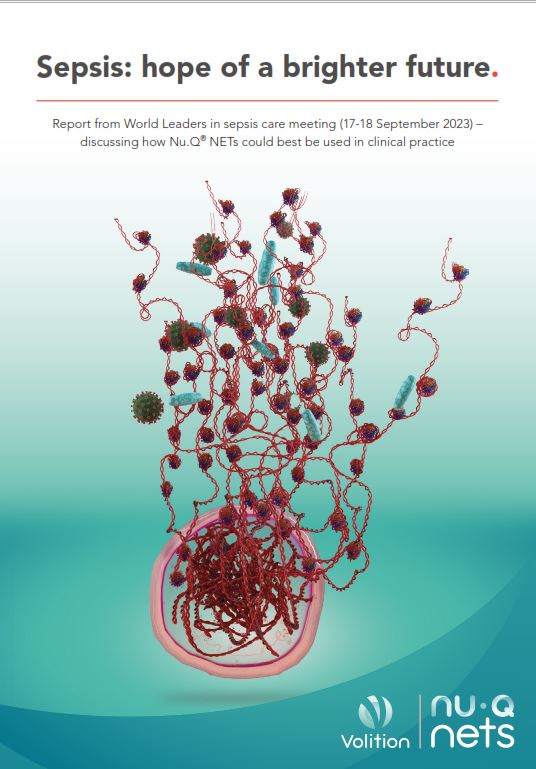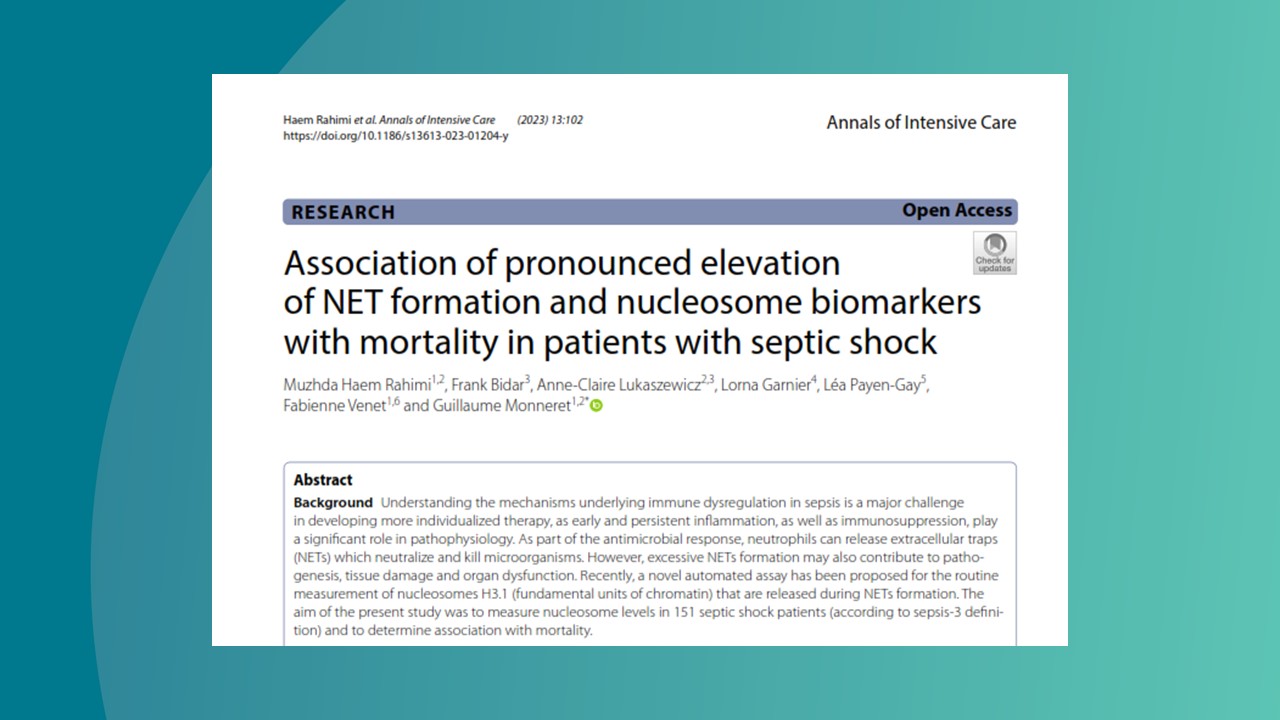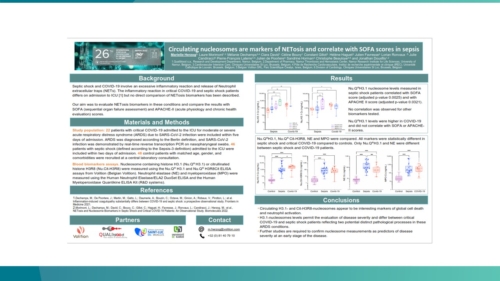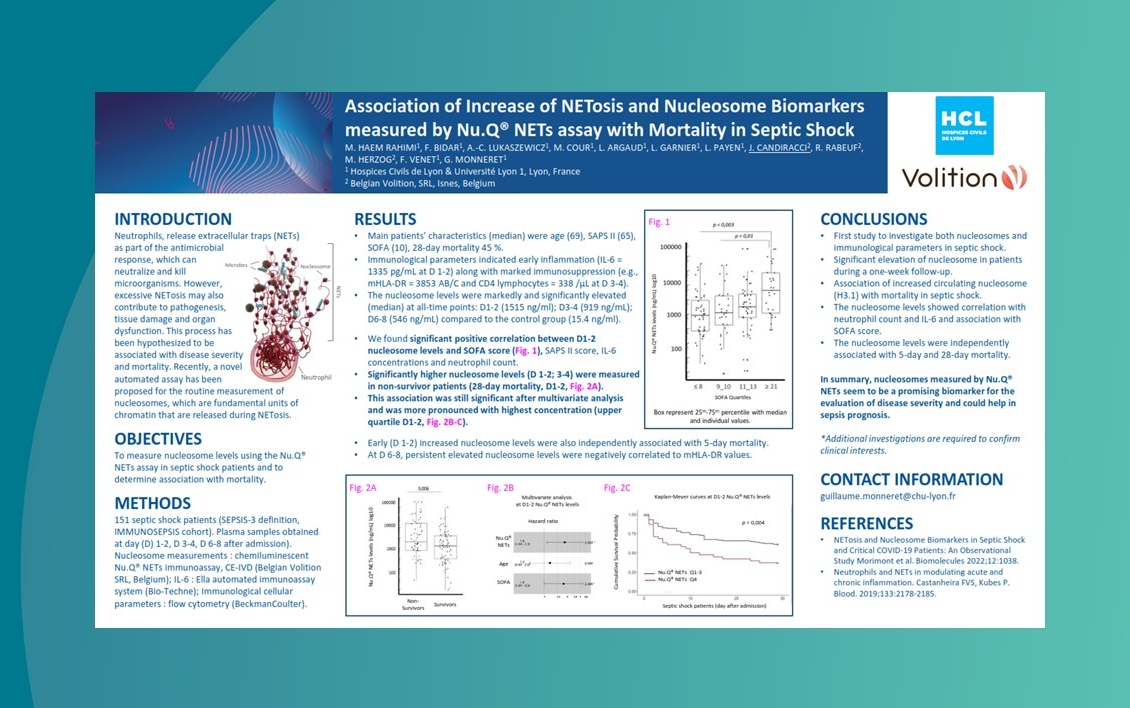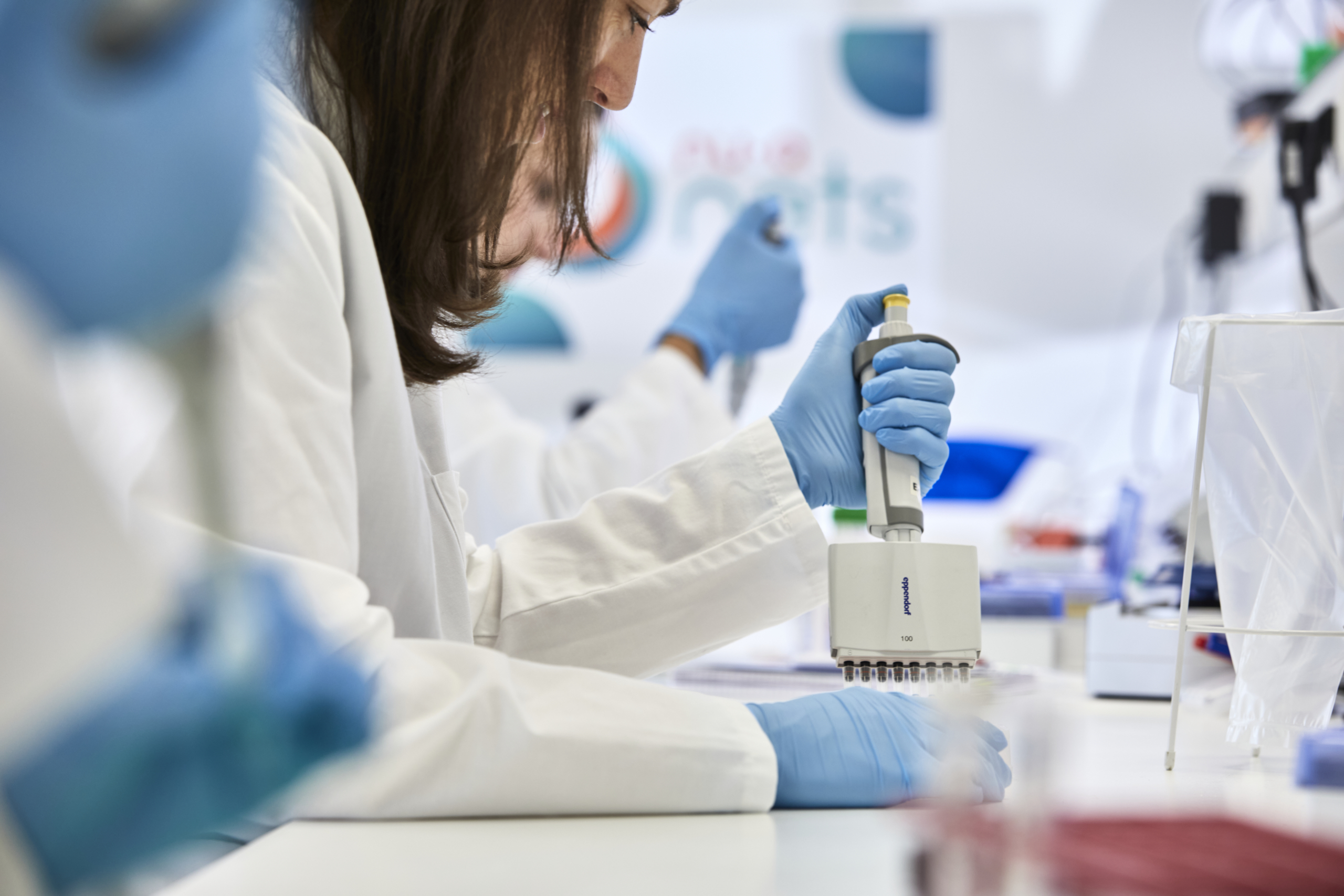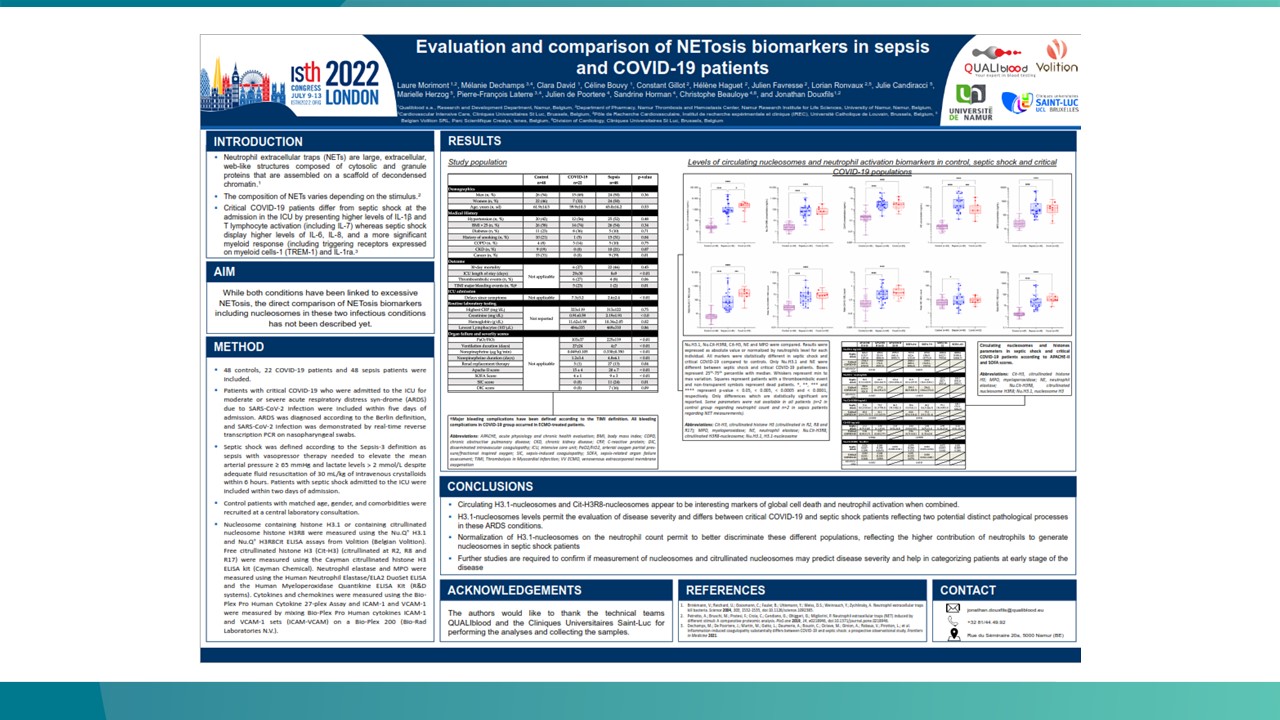-
Nu.Q® Technology
Our technology detects characteristic epigenetic changes in nucleosomes that occur from the earliest stages of cancer, sepsis and other diseases.
-
- Our Tests
- Human Health
-
Nu.Q® NETs
Nu.Q® NETs is a groundbreaking CE-marked diagnostic solution that clinicians can use to detect NETosis.
-
Nu.Q® Discover
Buy our Nu.Q® Discover H3.1 Research Use Only Assay
- Animal Health
-
Nu.Q® Vet Cancer Test
Nu.Q® Vet Cancer Test detects 76% of systemic cancers at 97% specificity.
Disease Areas
Sepsis
Rapid detection of sepsis is vital.


Sepsis
Sepsis is the number one cause of death in hospitals worldwide.
Sepsis kills an estimated 11 million people a year, which is more than cancer or coronary disease. In 2017, there were an estimated 49 million cases, with over half of all cases occurring among children and accounting for 2.9 million deaths in under-fives.
Approximately half of survivors are left with psychological and/or physical effects. They may struggle to remember everyday things, no longer be able to walk or be unable to dress or bathe themselves without help.
Early detection and treatment of sepsis has the potential to improve survival – and improve the quality of life of survivors.
sepsis cases per year
sepsis deaths each year
sepsis deaths of children under five each year
increased risk of death for every hour of treatment delay.
Sepsis can be hard to spot early; it is a syndrome with many faces and many of its symptoms mimic those of other conditions.
There is currently a lack of tests to diagnose sepsis symptomatically. Without prompt treatment, it can lead to multiple organ failure and death. Once sepsis is diagnosed, existing treatments – antibiotics, plus supportive therapies such as ventilation, IV fluids and vasopressors – are often not enough.
The risk of death from sepsis increases by 7.6% for each hour of delay in appropriate antibiotic therapy.
Our Nu.Q® NETs assay detects diseases associated with NETosis, such as sepsis.
Read our latest research papers and developments with Nu.Q® NETs.
Our Nu.Q® NETs assay detects diseases associated with NETosis, such as sepsis. It has the potential to help doctors accurately diagnose disease and could also help predict disease severity, measure treatment response and monitor disease progression.
This simple, low-cost, accessible test quantifies an individual’s level of circulating H3.1 nucleosomes in the blood stream, a surrogate marker for Neutrophil Extracellular Traps (NETs). Although NETs play a critical role in our normal immune response, elevated levels of NETs can lead to tissue damage, and in severe cases, sepsis, organ failure and death.
We are collaborating with centres of excellence worldwide to ensure Nu.Q® NETs can be introduced effectively into clinical settings. It could be used to screen patients for sepsis when they present with symptoms in the emergency room, or if their condition deteriorates on a hospital ward.


Detect NETosis
Nu.Q® NETs is a groundbreaking CE-marked diagnostic solution that clinicians can use to detect NETosis.
Act quickly
Nu.Q® NETs will support clinical decision-making, enabling physicians to act quickly, improving patient outcomes and patient management.
Personalized medicine
This offers opportunities for further research if NETs could allow the personalisation of treatment in sepsis patients.
Why is sepsis testing so important?
Currently sepsis is difficult to detect and a lack of early diagnosis results in poor outcomes.
Find out more about how our Nu.Q® NETs blood test, to diagnose and monitor patients at risk of sepsis, is currently being trialled at Guy’s and St Thomas’ NHS Foundation Trust in London.

Brochure & Clinical Papers
Next Steps
Talk to a specialist.
Please contact our expert team for more information about Nu.Q® Nets.
